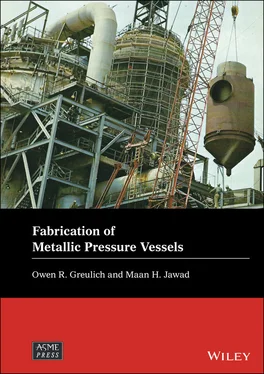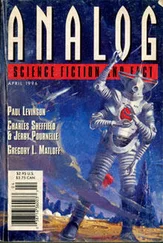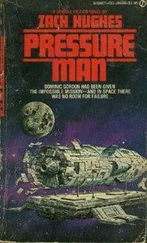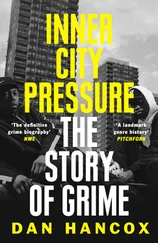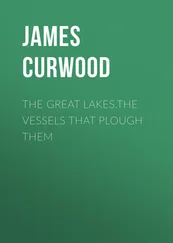Maan H. Jawad - Fabrication of Metallic Pressure Vessels
Здесь есть возможность читать онлайн «Maan H. Jawad - Fabrication of Metallic Pressure Vessels» — ознакомительный отрывок электронной книги совершенно бесплатно, а после прочтения отрывка купить полную версию. В некоторых случаях можно слушать аудио, скачать через торрент в формате fb2 и присутствует краткое содержание. Жанр: unrecognised, на английском языке. Описание произведения, (предисловие) а так же отзывы посетителей доступны на портале библиотеки ЛибКат.
- Название:Fabrication of Metallic Pressure Vessels
- Автор:
- Жанр:
- Год:неизвестен
- ISBN:нет данных
- Рейтинг книги:4 / 5. Голосов: 1
-
Избранное:Добавить в избранное
- Отзывы:
-
Ваша оценка:
- 80
- 1
- 2
- 3
- 4
- 5
Fabrication of Metallic Pressure Vessels: краткое содержание, описание и аннотация
Предлагаем к чтению аннотацию, описание, краткое содержание или предисловие (зависит от того, что написал сам автор книги «Fabrication of Metallic Pressure Vessels»). Если вы не нашли необходимую информацию о книге — напишите в комментариях, мы постараемся отыскать её.
A comprehensive guide to processes and topics in pressure vessel fabrication Fabrication of Metallic Pressure Vessels
Fabrication of Metallic Pressure Vessels
Fabrication of Metallic Pressure Vessels — читать онлайн ознакомительный отрывок
Ниже представлен текст книги, разбитый по страницам. Система сохранения места последней прочитанной страницы, позволяет с удобством читать онлайн бесплатно книгу «Fabrication of Metallic Pressure Vessels», без необходимости каждый раз заново искать на чём Вы остановились. Поставьте закладку, и сможете в любой момент перейти на страницу, на которой закончили чтение.
Интервал:
Закладка:
Historical photographs were obtained with the help of Pat Hachanadel and Patrick Wayne of Los Alamos National Laboratory, Zhili Feng of Oak Ridge National Laboratory, and Nolan O’Brien of Lawrence Livermore National Laboratory.
Susumu Terada of Kobe Steel in Japan and David Anderson of Doosan Babcock in England helped with metric unit conversions. Sam Greulich lent his artistic talent to restoring some old photographs and Mike Kelly assisted in obtaining material cost comparisons. Bud Brust provided welding residual stress plots.
Many of the weld symbols in the book were obtained courtesy of the American Welding Society with the help of Peter Potela. Photographs of weld equipment were supplied by CB&I Storage Solutions with the help of Koray Kuscu and Dale Swanson. A photo of a pipe beveler was supplied by E. W. Wachs with the help of Keith Polifka.
Appendix I contains shackle dimensions obtained courtesy of Crosby Corporation with the assistance of Michael Campbell. Bigge Corporation with the assistance of Randy Smith supplied a photo of a heavy transporter.
Lane Barnholtz of Clemco and Gavin Gooden of Blast One gave permission for publishing a blast room and a paint room photo, respectively.
Special thanks are given to Gabriella Robles of Wiley and Mary Grace Stefanchik of ASME for their expert help, without which this book would not have been possible.
1 Introduction
1.1 Introduction
The fabrication of process equipment involves a straightforward but complex sequence of operations that is developed and refined by industry or by individual manufacturers over the years. Each successful manufacturer of such equipment will have its own ways of working and will differ from others in the details of how processes are performed and level at which documentation becomes formalized, but the essential elements remain the same.
Some fabricators of process equipment have a standard product line, either available off the shelf or made to order. Those that do not have a product line and that bid for individual jobs within their field(s) of expertise are referred to as job shops or custom fabricators. Whether fabricating a piece of equipment on a job shop basis or producing a standard product, the organization must develop a design, procure or produce the component parts, and assemble them, all the while ensuring quality and maintaining quality assurance documentation.
1.2 Fabrication Sequence
To provide a background for the remaining chapters, which delve into the details of each aspect of pressure vessel fabrication, consider a large pressure vessel for a process application. The fabrication process flow proceeds as follows:
The pressure vessel manufacturer receives a request for quotation from the procurement organization for a petro‐chemical plant. A job file will be created and a project engineer or estimator will be assigned.
If the design of the pressure vessel is fully defined by the purchaser, including all dimensions, materials, interfaces, etc., then the bidding process will be straightforward. However, if just interfaces and process requirements are provided, then this will allow the fabricator leeway to use its particular experience, efficiency, or capability. Either way a job file will be created to document what is required and what has been accomplished. This allows keeping track of preliminary analyses, decisions, and details, and it ensures that work and research such as sourcing of unusual components done at the bidding stage does not have to be repeated if the company is successful in getting the job.
More sophisticated customers, such as oil refineries and larger chemical companies, may provide a fairly refined design and will often have their own design specification. Such company specifications usually include requirements that may increase the cost of fabrication over that of a minimal design. The further details are usually based on company experience indicating that long term overall costs are reduced by the additional requirements. Others will leave much of the design to the fabricator, just defining interfaces and process requirements such as temperature, pressure, volume and envelope dimensions, and chemical compatibilities. Or they may provide the design of a vessel that is being replaced but still allow some design and fabrication flexibility for the new vessel.
If only limited design information is received, then a preliminary design must be roughed out to produce a cost estimate. Even if the design is fully defined, the fabricator will still need to resolve items including many of the weld details, weld processes, and things such as whether a nozzle is fabricated using a pipe and a flange or a long welding neck (LWN) flange. Not every detail needs to be worked out at this stage, but there needs to be sufficient resolution of the design that a reasonable cost estimate can be produced. Accuracy should be precise enough that the company can be confident of making a profit on the job and at the same time be competitive on price and delivery. Extra time invested at this point can often find ways to keep overall fabrication costs down, resulting in a higher bid success rate and helping ensure that no unpleasant surprises occur after receipt of a contract.
This book will not address the details of developing a bid on process equipment except to note that accurate bidding involves a thorough understanding of what it takes to produce the required equipment, and enough clarity in the estimate to ensure that all aspects of the effort are covered. Fabricators with standard products may use sophisticated internal estimating programs to develop pricing information. Other fabricators rely on the background and experience of their estimators to put together material and labor costs for each and every job, and some use standard industry programs to assist.
Once the order is actually received, the design and process flow will be finalized and a quality assurance package begun.
If not already accomplished at the bid stage, trade‐offs will be assessed, such as stronger material or additional inspection such as radiography or ultrasonic testing to allow increased joint efficiency to reduce vessel wall thickness. This can reduce total material weight and the amount of welding required. Some parts of the design may be decided based on shorter lead times for one option than for another. Some are based on the particular equipment and capabilities available within the company. Others are based simply on cost. After all aspects of the design have been defined, a detailed material list will be produced. This may be done using in‐house or specialized industry software, or it may be done by hand. Any material not available from stock must be procured, and process flow may be adjusted accordingly.
It is usual to identify long lead time items and contract for them immediately. Typically, these include heads (if not made in‐house), special valves, filters, and forgings, any mill orders, anything made of exotic materials, and anything else that was identified during the bid stage as requiring extra time. Some custom manufacturers may stockpile such items as exotic materials and exotic weld supplies in anticipation of future orders to minimize lead time and get an edge over their competitors.
Weld procedures may be developed at this time if they are not available, as coupons can then be produced and tested in parallel with the wait for materials and components without extending the overall schedule.
Also, at this time quality assurance personnel develop plans for the required inspections, tests, and hold points that will take place throughout fabrication. This will include a number of dimensional inspections, verification that reported test results are compliant with applicable requirements, verification of process control of welding and other processes, and review of radiographs and other nondestructive examination (NDE) results. Review by the Authorized Inspector will be included if the work involves an ASME code stamp, which for a pressure vessel it almost certainly does.
Читать дальшеИнтервал:
Закладка:
Похожие книги на «Fabrication of Metallic Pressure Vessels»
Представляем Вашему вниманию похожие книги на «Fabrication of Metallic Pressure Vessels» списком для выбора. Мы отобрали схожую по названию и смыслу литературу в надежде предоставить читателям больше вариантов отыскать новые, интересные, ещё непрочитанные произведения.
Обсуждение, отзывы о книге «Fabrication of Metallic Pressure Vessels» и просто собственные мнения читателей. Оставьте ваши комментарии, напишите, что Вы думаете о произведении, его смысле или главных героях. Укажите что конкретно понравилось, а что нет, и почему Вы так считаете.
